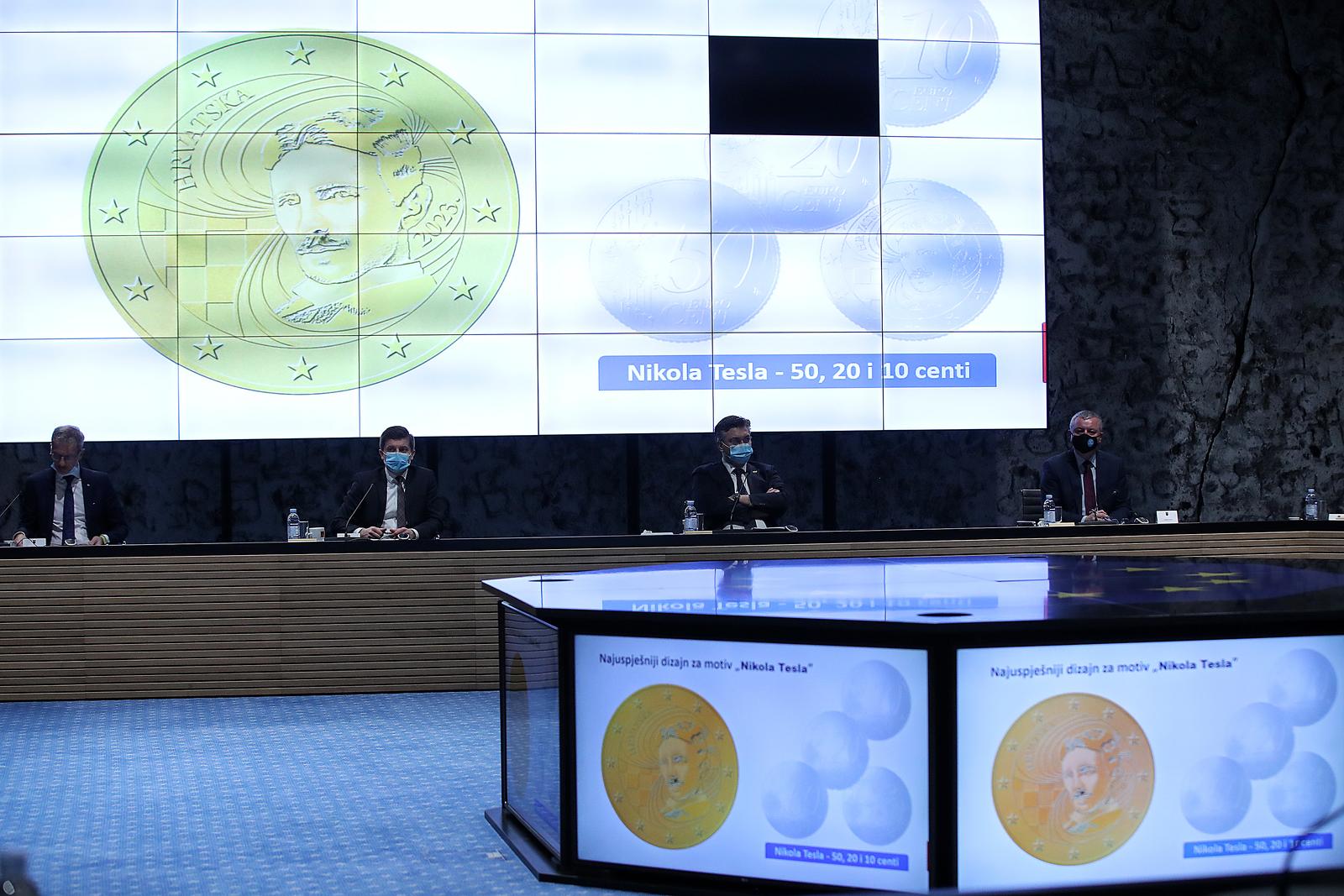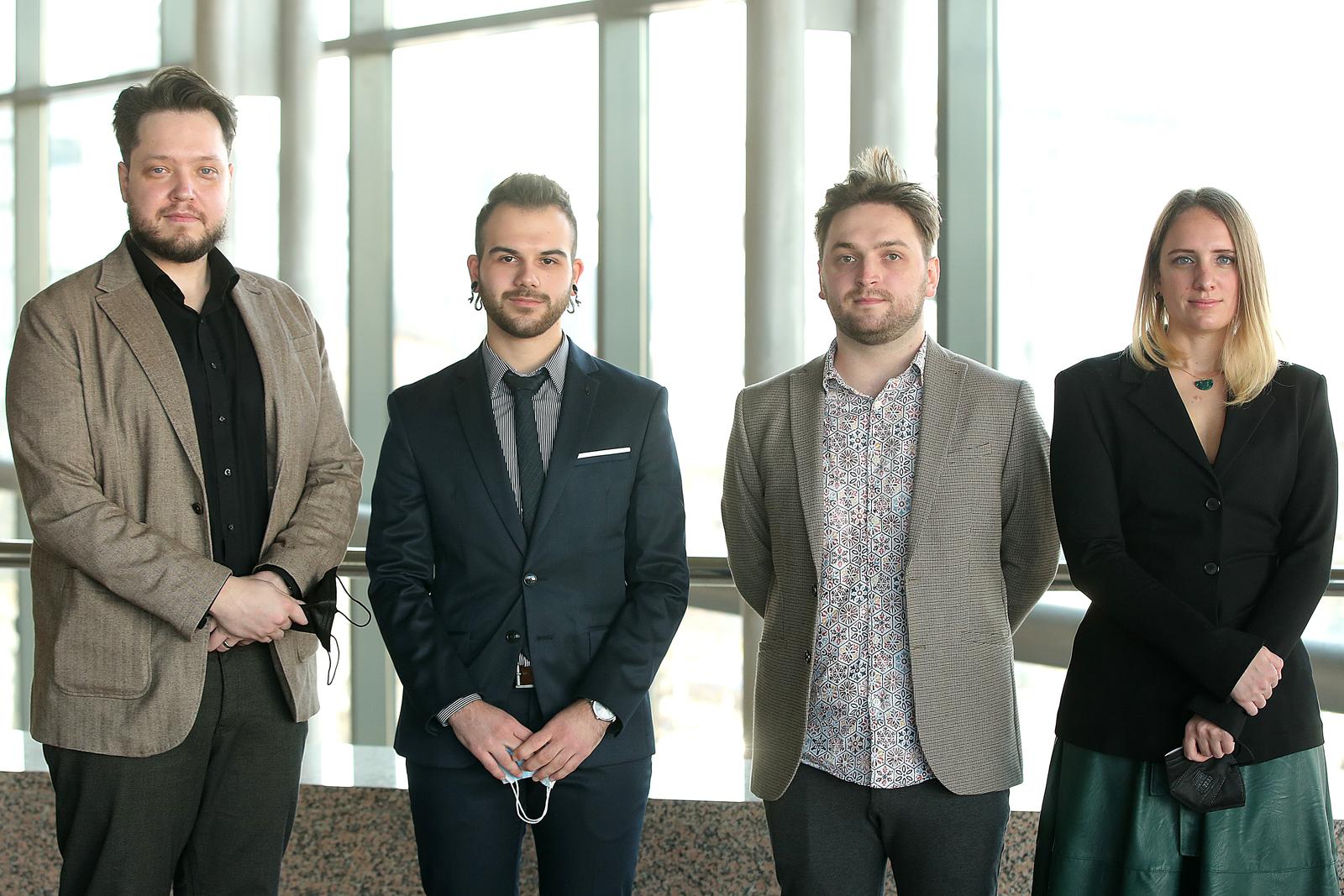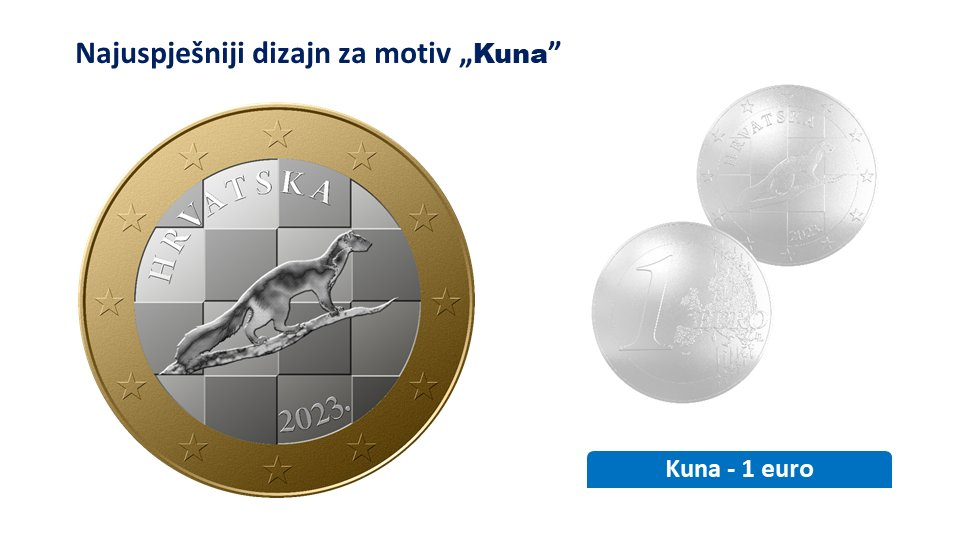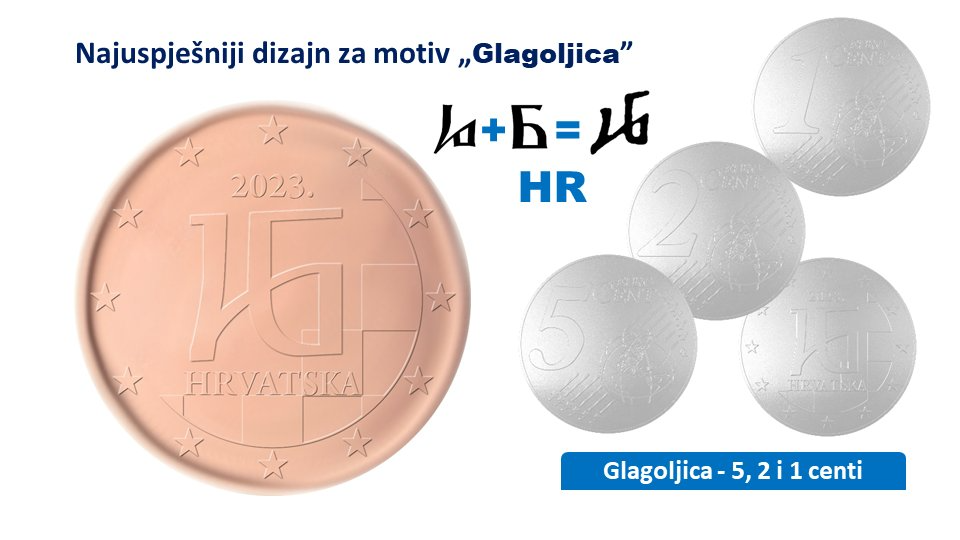Belonging to Euro Area Boosts Croatia's Resilience to Crises, says PM
ZAGREB, 24 June 2022 - Support for Croatia's eurozone membership bid is an excellent sign for its highly euroized economy and will also boost its resilience to crises, Prime Minister Andrej Plenković said on Friday ahead of the start of the second day of the EU summit meeting.
One of the topics on the agenda of the two-day summit meeting is Croatia's entry into the euro area, and the leaders of the EU members states will support Croatia's accession, which is the penultimate step in the decision-making on receiving an aspirant in the euro area.
The last step is the adoption of three legislative proposals concerning Croatia's introduction of the euro, which will be made by the Council for Economy and Finance (EU Ecofin Council) on 12 July.
Thus, Croatia's changeover to the euro can start on 1 January 2023.
Today's summit meeting is very important for Croatia, which will become the 20th member of the euro area. This is a strategic goal of my cabinet, said Plenković while arriving at the summit meeting.
7 in 10 tourists in Croatia come from the euro area
Commenting on the highly euroized economy in Croatia, Plenković noted that 50-60% of loans and savings are tied to the euro, and 70% of travellers visiting Croatia are from the euro area, while two-thirds of the exchange is with the euro area.
The membership of the euro area will make Croatia better prepared to respond to crises such as energy and food crises or inflationary pressure, he said adding that the membership of the EU facilitated Croatia's efforts to address the COVID-19 pandemic.
For more, check out our politics section.
Croatia Could Get Positive Assessment on Euro Introduction on 1 June
ZAGREB, 23 May 2022 - The European Commission plans to issue a convergence report on 1 June which could give Croatia a final assessment on its readiness to adopt the euro.
European Commission Executive Vice-President Valdis Dombrovskis on Monday confirmed that the Commission plans to release its convergence report on 1 June.
"In Croatia debt ratios have declined significantly over the years and show a strong downward trend. This sends an important signal ahead of the convergence report that we will present on 1 June. As you know, Croatia aims to adopt the euro as its currency on January 1, 2023," Dombovskis told a press conference.
In its analysis of the macroeconomic situation in Croatia, the Commission notes that the country has made progress in reducing private debt and net external liabilities. It underscores that public debt remains high but continues its downward trend towards the situation prior to the COVID-19 pandemic. The banking system remains stable and liquid and the share of bad loans is decreasing. The potential for production growth has increased and funds under the Recovery and Resilience Mechanism can help deal with other vulnerabilities, the Commission says.
The Commission publishes its convergence report every two years. According to the last report in June 2020, Croatia had fulfilled all the criteria to enter the euro area except for membership of the European Exchange Rate Mechanism (ERM II).
Croatia soon met that criterion too, when it entered the ERM II on 10 July 2020.
The readiness to introduce the euro is determined according to convergence criteria, including price stability, regulated public finances, exchange rate stability, and convergence of long-term interest rates. National legislation is checked against the rules of the Economic Monetary Union (EMU).
Currently, the inflation rate is the only uncertain criterion at the moment. It must not exceed by more than 1.5 percentage points the average inflation rate of the three EU countries with the lowest annual inflation in the year preceding the assessment of the situation in the candidate country.
If Croatia gets a positive assessment, the finance ministers of the 19 euro area countries need to adopt the Commission's recommendation with a qualified majority.
The formal decision is delivered by Ecofin, comprising all EU finance ministers, after consultations with the European Parliament and following the June summit of EU leaders.
For more, check out our politics section.
Best Design for Croatian Side of 1 Euro Coin Presented
ZAGREB, 4 May 2022 - The best design for the national side of the 1 euro coin, chosen in a repeated competition, was presented at a meeting of the national council for the adoption of the euro as legal tender in Croatia on Wednesday.
The author of the design, student Jagor Šunde, received a HRK 70,000 reward for his work, while co-authors David Čemeljić and Fran Zekan each received HRK 30,000.
The Croatian National Bank (HNB) received 192 design proposals, of which 135 were considered in the first round of the competition, said HNB Vice-Governor Ivana Jakir-Bajo, who also serves as the chair of the Currency Commission and the Commission for the Selection of Design Proposals.
A jury of renowned Croatian artists and experts considered all the proposals received and chose the best five proposals without ranking them. In the second round of the competition, the HNB Currency Commission selected the best design and submitted it to the Council of the European Union, the European Commission and the euro area member states.
On 20 April, the HNB was notified by the Council of the EU that the design submitted had been approved.
The minting of 1 euro coins and coins of other denominations with the Croatian national side can begin only after the Council of the EU approves Croatia's decision to adopt the euro as legal tender.
The best designs for the Croatian side of euro and cent coins were originally presented in early February. However, it soon turned out that the selected author of the 1 euro coin design with the motif of a marten had illegally used a photograph of a marten by a Scottish photographer as a template for his design. The author, Stjepan Pranjković, withdrew his proposal after which the HNB invited new proposals for the 1 euro coin design.
The Croatian side of the 1 euro coin will feature a marten motif, 50, 20 and 10 cent coins will feature an image of scientist Nikola Tesla, and 5, 2 and 1 cent coins will have the letters HR written in the Glagolitic alphabet. All coins will also have elements of a chequerboard in the background.
For more, make sure to check out our dedicated lifestyle section.
Croatian Euro Coin Design Winners Officially Announced
February 4, 2022 - Through their official social media accounts, both the Prime Minister of the Republic of Croatia and the Croatian Government shared the winning motifs for the 2 and 1 Croatian euro coin, and the 50, 20, 10, 5, 2, and 1 cent coins, all of which will enter in circulation next year.
In recent years, the conversation around Croatia's accession to the eurozone has been increasing significantly. Since joining the European Union in mid-2013, the idea of carrying out a transition from the kuna to the euro has gone from being a distant scenario to near reality. It is no secret that the Croatian government's position on such change was favorable and that, eventually, it was simply a matter of defining how and when.
Precisely, as of today, the answers to both questions are already known, as the Croatian Government, its Ministry of Finance, and the Croatian National Bank (HNB) are working on the final details. The Croatian Kuna will cease to be the official currency, and the Euro will replace it in 2023. From September 5th, prices will be displayed in both Kuna and Euros, so that both locals and foreigners get used to the idea and become familiar with the new currency. Likewise, the first two months of 2023 will serve to withdraw the Kuna from circulation. As the Governor of the HNB Boris Vujčić reported shortly ago, citizens will have the possibility of paying with kunas, but only as a way to collect those coins for their subsequent storage.
Now that the idea of the euro as the official currency in Croatia is getting closer and closer to reality, many questions have arisen from both financial authorities, companies, and even Croatian citizens themselves. The positions are diverse: from rejecting the Euro in order to defend a Croatian symbol such as the Kuna, to wondering what the economic consequences will really be. The rejection of a large sector of the population was expressed through a referendum that was recently held throughout the country. The objective of the referendum was to postpone Croatia's access to the eurozone because, it should be remembered, by being a member of the European Union, Croatia cannot bail out of using the Euro as currency, but it could keep an indefinite period of transition.
The government responded by guaranteeing that not only will the transition from one currency to another take place smoothly, but that the long-term benefits will allow Croatia to reach economic standards that allow it to equalize its status with other European Union countries. Minister Zdravko Marić revealed that the Ministry of Finance will make sure to monitor that prices are set correctly, and does not rule out the existence of sanctions for those who increase them unsustainably. For its part, the Croatian National Bank promised to effectively control the inflation rates that may be generated as a result of this currency change.

Today's session of the National Council for the Introduction of the Euro as the Official Currency in Croatia. (Photo: Goran Stanzl/PIXSELL)
Most likely, doubts will be resolved along the way, since it seems that the decision has already been made and there is no going back. Following an official Croatian government meeting earlier today, the Government of the Republic of Croatia shared the official winner designs of the Croatian Euro coin, and all the details about each design, on their social media accounts. You can watch the complete session here. Each coin was accompanied by a video and information about its designers. The Government shared the following on their Instagram account:
''At today's session of the National Council for the Introduction of the Euro as the Official Currency in Croatia, the design solutions of the Croatian side of the euro and cent coins were presented. A total of 1,299 proposals were submitted to the open competition, and the commission in charge of selecting the most successful solutions did not know who the authors were, but evaluated and ranked each proposal only on the basis of the proposed design.
The first-ranked proposals were officially approved by European Council on January 28 this year. We also thank and congratulate the authors of the selected motifs! These are:
- Ivan Šivak - author of the conceptual design "Geographic Map of Croatia" for a 2 euro coin
Najuspješniji dizajn za motiv „Geografska karta Hrvatske" - kovanica 2 € pic.twitter.com/XSxLU3OTDI
— Vlada Republike Hrvatske (@VladaRH) February 4, 2022
The author of the 2 euro coin motif, "Geographical Map of Croatia", is Ivan Šivak, born in 1985 in Zagreb. He graduated from the Academy of Fine Arts in Zagreb in 2011 at the Department of Animated Film and New Media. Since 2011 he has been a member of the Croatian Society of Fine Artists. He lives and works in Samobor.
- Stjepan Pranjković - author of the conceptual design "Kuna" for a 1 euro coin
Najuspješniji dizajn za motiv „Kuna” - kovanica 1 € pic.twitter.com/CJwzWMcIqR
— Vlada Republike Hrvatske (@VladaRH) February 4, 2022
The author of the 1 euro coin motif, ''Kuna'', is Stjepan Pranjković, born in 1995 in Ostfildern, Germany. At the Academy of Applied Arts in Rijeka, majoring in Applied Arts, module painting, he obtained the title of Master of Applied Arts in 2020. He lives in Rijeka.
- Ivan Domagoj Račić - author of the conceptual design "Nikola Tesla" for 50, 20 and 10 cent coins
Najuspješniji dizajn za motiv „Nikola Tesla” - kovanice 50, 20 i 10 centi pic.twitter.com/sGfVnrTaCX
— Vlada Republike Hrvatske (@VladaRH) February 4, 2022
The author of the 50, 20, and 10 cent coin motif, ''Nikola Tesla, is Ivan Domagoj Račić, born in 1999 in Zagreb. Today he is a full-time third-year aeronautics student at the Faculty of Transport and Traffic Sciences in Zagreb. His interest in graphic design began in high school, when he began to study independently.
- Maja Škripelj - author of the conceptual design "Glagolitic" for coins of 5, 2 and 1 cent
Najuspješniji dizajn za motiv „Glagoljica” - kovanice 5, 2 i 1 cent pic.twitter.com/kh1IYEzSXV
— Vlada Republike Hrvatske (@VladaRH) February 4, 2022
The author of the 5, 2 and 1 cent coin motif, ''Glagolitic'', is Maja Škripelj, born in 1988 in Zagreb. She graduated from the Faculty of Architecture in Zagreb with a master's degree in engineering and architecture in February 2014. From graduation until July 2020, she worked in the architectural office, and now has her own business.

The designers behind the winning motifs for the Croatian euro coin: Ivan Šivak, Ivan Domagoj Račić, Stjepan Pranjković, and Maja Škripelj. (Photo: Goran Stanzl/PIXSELL)
After presenting the winners and their designs, the Croatian Government continued:
''In addition to the mentioned motifs, the Council of the European Union also approved another, additional motif, ie the text, which is an inscription that each country can choose and engrave on the 2 euro coin, which is the largest.
On the Croatian 2 euro coin, in addition to the Croatian chessboard, as an element of the Croatian coat of arms, and a map of the Republic of Croatia, Gundulić's verse "O LIJEPA O DRAGA O SLATKA SLOBODO" will be engraved on the rim.
As is well known, this is one of the most famous and beautiful verses from the Anthem of Freedom, which is an integral part of the pastoral "Dubravka" from the 17th century by Ivan Gundulić. The Republic of Croatia, as a symbol of Croatian statehood and independence, should also have a verse from the Anthem of Freedom, which best symbolizes the millennial aspiration for freedom of the Croatian people''.
Below we show you each Croatian euro coin in detail:

The Croatian Euro coin designed by Ivan Šivak features the geographical map of Croatia and due to its size also features the verse: ''O LIJEPA O DRAGA O SLATKA SLOBODO'' engraved on the edge.

The Croatian Euro coin designed by Stjepan Pranjković features the Kuna, Croatia's symbolic animal.

The Croatian Euro coin designed by Ivan Domagoj Račić features Nikola Tesla, the world-famous inventor and engineer born in Smiljan.

The Croatian Euro coin designed by Maja Škripelj features the Glagolitic alphabet, the oldest Slavic alphabet, from Croatia. The two Glagolitic letters chosen will form the Croatian ISO: HR.
For more, check out our politics section.


